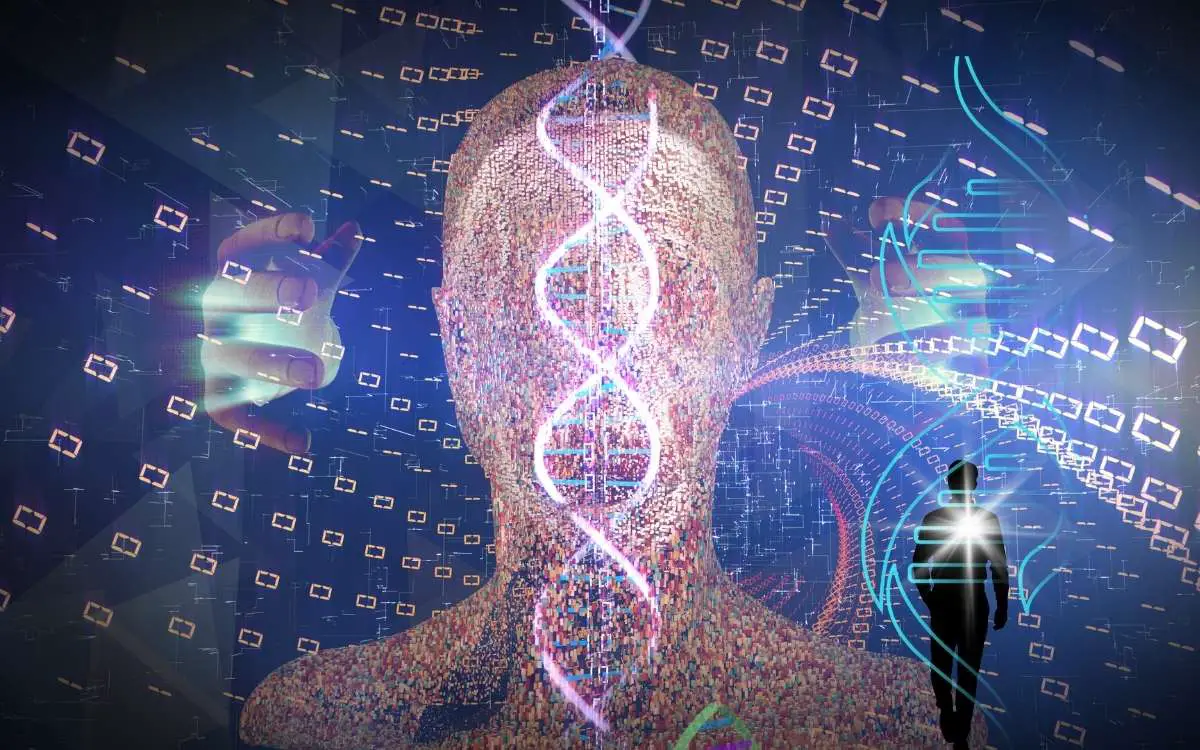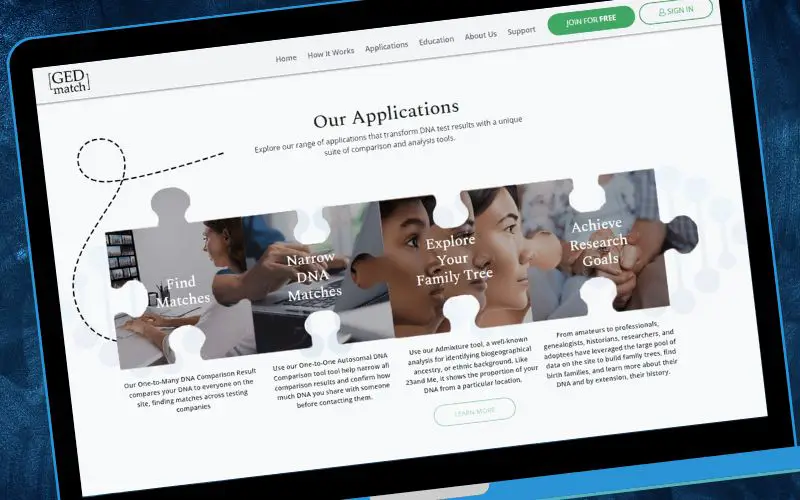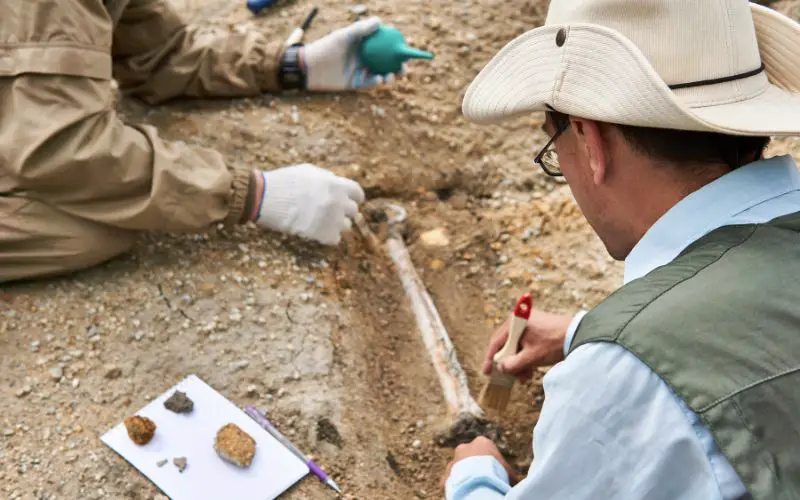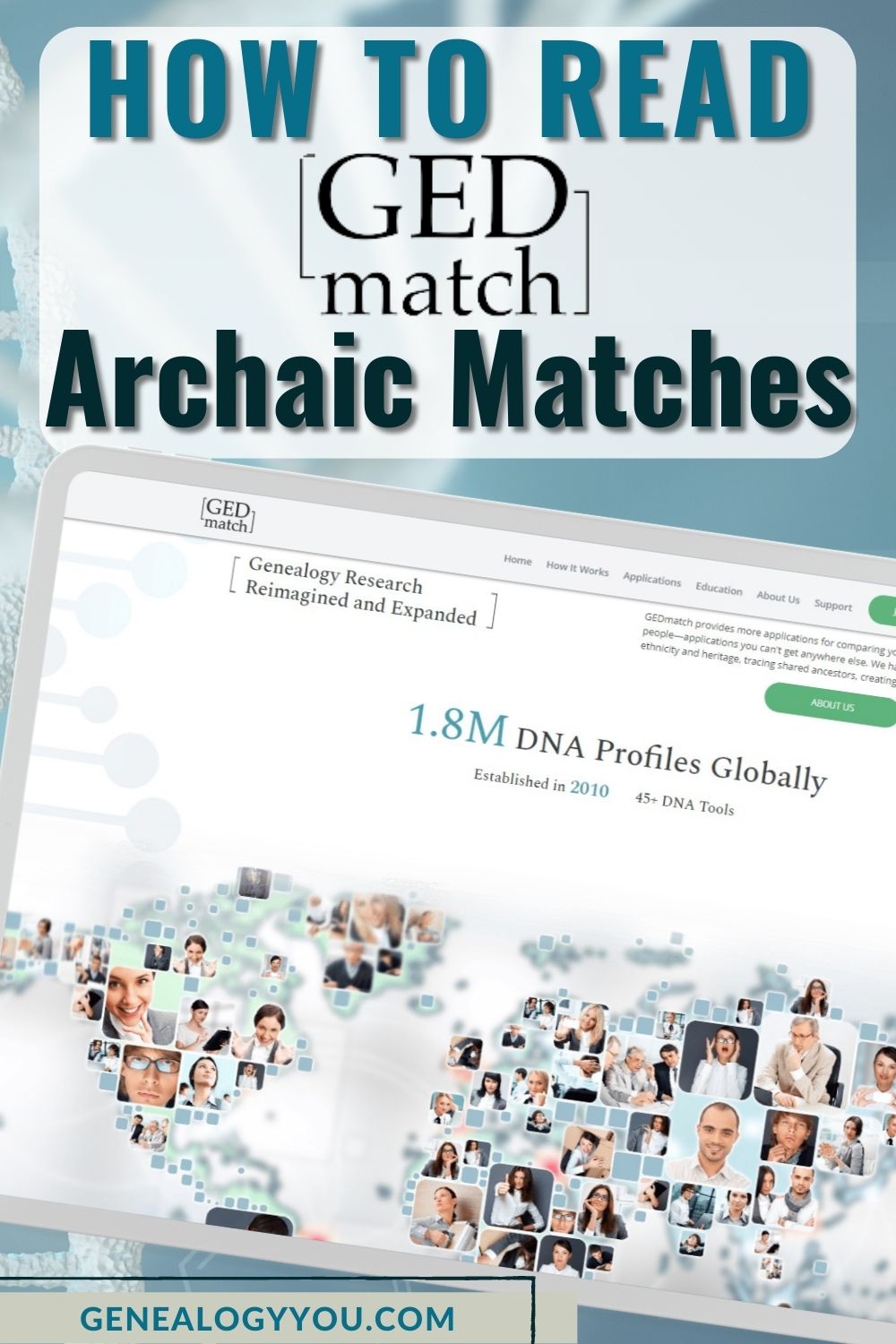Do you ever wonder how far back you can trace an ancestry? Like, if it were possible to time travel and witness direct ancestors just living out their lives.
Some people thought about it so much they turned it into a game called Assassins’ Creed.
That might sound more violent than historical, but the premise centers around a guy who steps into a machine that can transport him back.
By back we mean through his DNA to relive history through the memories of his ancestors.
Can you imagine the places you’d go and the scenes you’d be in the front row of if you had the ability to see the world through the eyes of an ancestor?
In the Assassins’ Creed franchise, one of the games goes back as far as ancient Greece.

In real life, it might be possible to go back even further. While we can’t step into the animus and have a virtual reality moment, we do have the power of DNA samples.
That ability has opened us up to a whole new set of knowledge about our past because of archaic matches.
What is Ancient DNA?
Contents
- What is Ancient DNA?
- Where Does Archaic DNA Come From?
- What Are Archaic DNA Matches?
- Archaic DNA Matches Tool
- What is GEDmatch?
- DNA Matches on GEDmatch
- How to Discover Ancient DNA Matches
- Locations of Common Ancestors
- Interpreting the Archaic Samples
- Comparing Archaic DNA Matches
- Sample DNA Matches on GEDmatch
- FAQs
Simply put, ancient DNA samples come from ancient specimens. Unfortunately, when it comes to keeping samples whole, time is not on our side.
Ancient DNA samples are not as high quality as getting a sample from someone in more recent times, but it’s something. They are also kind of tough to come by.
Archaic DNA samples can provide inquiring minds with a lot of info about the past. Things including what the population might have been and when in time people from other places started intertwining.
Where Does Archaic DNA Come From?
There are quite a few avenues researchers can get answers from. Below is a list of possible places where ancient samples can be gathered.
While this covers a lot, the ways of locating archaic DNA are not limited to the list, but it’s a good place to start:
- Fossils
- Skeletal remains
- Mummified remains
- Archived specimens
- Preserved plants
What Are Archaic DNA Matches?
Essentially, there is a pool of ancient DNA samples that experts can identify and provide info related to the person who housed the DNA to begin with.
Whether they come from Europe or Asia or if it is Neanderthal DNA.
Archaic samples come from all over the world.
At this point, you might be wondering if this is something you can use to expand the family tree.
Many people have access to several generations back, but being able to say you have Neanderthal in your genes is something else.
Ancient humans have an interesting story to tell, too. Thanks to the internet, the findings of DNA segments have been made available to a wider audience.
Archaic DNA Matches Tool
Using an archaic DNA matches tool enables you to see how this ancient DNA impacts you directly.
You’ll be able to see which DNA segments you have in common with perhaps the most distant cousins.
DNA matches come from the process of sequencing your DNA and putting it up against the pool samples to find an archaic DNA match.
The tool page is online and it’s as easy as logging in to start the process of comparison with your DNA and ancient DNA.
What is GEDmatch?

Sir Frederick G Banting discovered insulin and with his team, they understood the difference it could make to those with diabetes.
This Nobel prize-winning scientist could have cashed in the knowledge he gained and retired from the proceeds.
However, it was more important to him that anyone who needed this medicine had access to it. So, Sir Frederick sold the patent for $1 to a university. In his own words, “Insulin does not belong to me, it belongs to the world.”
That same sentiment goes for any person or website that has proprietary information but uses it for good. By good, we mean offers to the general public to use it for free.
That’s what GEDmatch does for genealogy research.
DNA Matches on GEDmatch
This online database covers the earth with samples taken from autosomal DNA. Of course, you can log onto the GEDmatch dashboard and find many samples of data that could help you.
This includes finding a family that is currently living or even an unknown direct ancestor from the past.
What it means to us, for the archaic DNA match, is that we can take normal DNA applications and go deeper. The samples available go back as far as 120,000 years or more.
Talk about a compare and contrast situation. As fun as it would be to connect with other GEDmatch users, finding a common segment from the dawn of humanity is on another level.
If you’ve used any of the well-known DNA testing sites, such as Ancestry or 23andMe, you already have the info needed to learn about your ancient DNA.
How to Discover Ancient DNA Matches

If you’re interested in finding out more about ancient samples, you’ll want to start a GEDmatch account. It’s free!
Once you’ve logged on, you’re able to take the DNA results from other sites and upload them to GEDmatch. To do so, just tap the menu on the right and click Upload DNA.
Before that step can be completed, users will need to get that data from the original site.
If you’re unsure how to do that, GEDmatch is kind enough to walk you through the processes. Write the kit number down provided by GEDmatch. You will need it later.
After you have uploaded the file and are ready to go, log back on to GEDmatch. The next screen over from the log-in will be the dashboard.
From the menu, click Free Tools and then Archaic DNA Matches.
At this point, the site will ask you to enter the GEDmatch kit number. This is also where you can set the upper segment threshold limit, from .5 cM up to 10 cM (centimorgan). GEDmatch defaults on .5 cM, but feel free to play around with it.
Locations of Common Ancestors
The next screen is going to look immediately confusing. It will say GED Archaic Matches at the top and then a black and orange graph below.
On the left, you will see a litany of phrases that are location related. From Neandertal Croatia to Ireland or Russia BCE and beyond, there are a lot of possibilities to take in.
At the outset, this probably feels a lot like ethnicity estimates on other DNA sites. If Native American heritage is in your background, it would show up there.
Ethnicity estimates update ever so often, as the sample pool increases, and are only getting more accurate. That’s another subject, though.
As you scroll down, you will see details like Oakington, England, 400 – 545 AD, early Anglo-Saxon. Even more interesting, further back samples like La Mina, Spain 3.8ky BCE, Iberian Mid Neolithic.
You may or may not have anything in common with these samples, but it gives you perspective on the scope of what you’re comparing your DNA to.
Interpreting the Archaic Samples
The orange bars indicate matching segments. Sometimes the bar is solid all the way across and sometimes there are thin strands of orange in a line.
The more orange, the more you have in common with the matching segments.
Starting with .5 cM means you will probably see a lot of ancient DNA matches. It will look like you have something in common with most of the samples.
Honestly, there probably is a little bit of most things in all of us. However, if you go back and set the threshold limit at something larger, like 1 or 5 cM, it’s likely that the DNA matches will get smaller.
The reason for that is you are upping the expectations. A bigger number means you’re looking for more substance in the results.
So, if you were to go from .5 cM up to 5 cM, a majority of the orange will dissipate. Then you can see what’s showing up stronger.
Comparing Archaic DNA Matches
If you have someone else share their results with you, it’s unlikely that they will be identical. However, if you find that there are parts where you have strong similarities, that could be exciting.
You wouldn’t assume your ancestors were very close, but it is likely that you have some overlapping in the family tree.
This means, you aren’t necessarily direct ancestors, but it’s likely you have a common ancestor from the same area.
Genetic genealogy is making a family tree larger than anyone could have fathomed.
Sample DNA Matches on GEDmatch

If you’re looking at the results and wonder what some of these abbreviations mean, we’ve put together a few examples to go on.
F999902 Altai N., Siberia 50ky
All the archaic DNA matches start with F999 and finish with different digits. The words here stand for Altai Neanderthal.
This specimen is a toe bone from a Neanderthal and was found in Siberia. The age is around 120,000 years old.
F999903 Denisova, Siberia, 30ky
In Siberia is Denisova Cave where remains were found. A piece of a bone from someone who lived 30,000 years ago had enough DNA to provide us with a possible common ancestor.
Well, at the very least, archaic DNA. The finger bone belonged to a female child with dark features.
F999916 LBK, Stuttgart, 7ky
The Linearbandkeramik people lived in the area we now call Stuttgart, Germany. The sample that popped up is from a farmer who lived 7,500 years ago.
FAQs
WhichEthnic Group Has the Most Neanderthal DNA?
East Asians are at the top of the list when it comes to Neanderthal showing up in autosomal DNA. Those who descend from Europe show up next.
Most who run their file will see at least some DNA matches on GEDmatch in this category.
Is GEDmatch More Accurate Than AncestryDNA?
Technically, that’s not a fair comparison. GEDmatch does not have its own DNA testing kits. The website uses the info from other testing kits to help you connect to others or see archaic DNA matches.
What is a Sample Labeled Neolithic in GEDmatch?
Neolithic refers to a period in human development that happened around 12,000 years ago. You may also know it as the New Stone Age.
There are multiple samples that show up during this time period and each one has a little bit different insight attached.
We have the ability to trace back to the Neolithic age because experts have been lucky enough to come across specimens from those time periods.

